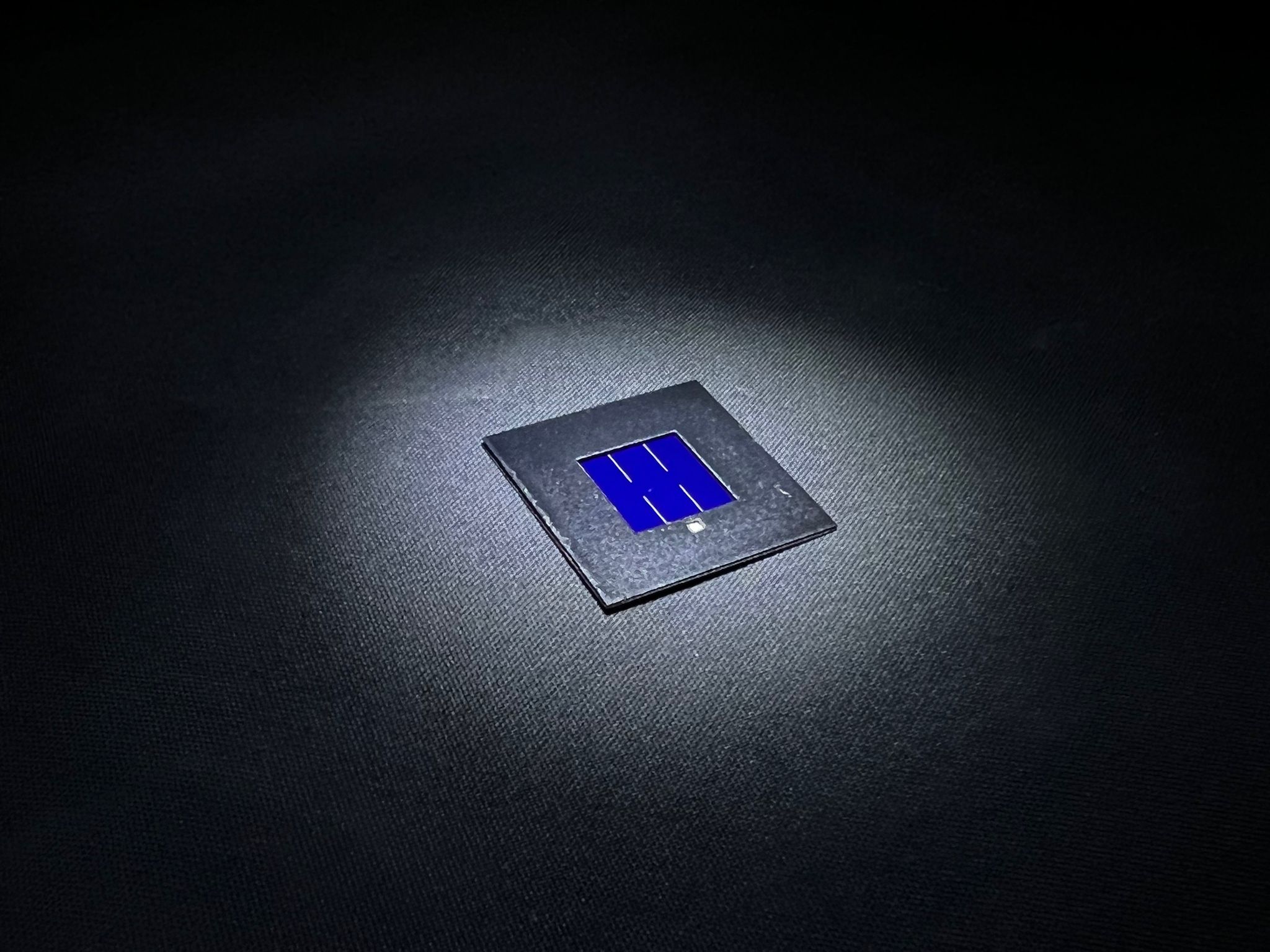One more slice to drive the solar stack

Considerable performance gains in perovskite–silicon tandem solar cells (such as that pictured above) can be achieved by adding a magnesium fluoride interlayer. Photo: Erkan Aydin / KAUST 2022
Inserting a metal fluoride layer in multilayered perovskite–silicon tandem solar cells can stall charge recombination and enhance performance, KAUST researchers have found.
Tandem solar cells that combine perovskite and silicon-based subcells in one device are expected to better capture and convert sunlight into electricity than their conventional single-junction silicon analogs at a lower cost. However, when sunlight strikes the perovskite subcell, the resulting pairs of electrons and positively charged holes tend to recombine at the interface between perovskite and the electron-transport layer.Also, a mismatch between energy levels at this interface hinders electron separation within the cell. Cumulatively, these problems lower the maximum operating voltage available, or open-circuit voltage, of the tandem cells and limit device performance.
These performance issues can partially be solved by introducing a lithium fluoride layer between the perovskite and electron-transport layer, which usually comprises the electron-acceptor fullerene (C60). However, lithium salts readily liquify and diffuse through surfaces, which makes the devices unstable.

Portrait of KAUST postdoctoral student, Jiang Liu. Photo: KAUST 2022
Lead author Jiang Liu, a postdoctoral fellow in Professor Stefaan De Wolf's group in the KAUST Solar Center, is developing high-efficiency perovskite/silicon tandem solar cells by using interface and composition engineering.
"None of the devices have passed the standard test protocols of the International Electrotechnical Commission, prompting us to create an alternative," Liu said.
Liu, De Wolf and coworkers systematically investigated the potential of other metal fluorides, such as magnesium fluoride, as interlayer materials at the perovskite/C60 interface of tandem cells. They thermally evaporated the metal fluorides on the perovskite layer to form an ultrathin uniform film with controlled thickness before adding C60 and top contact components. The interlayers are also highly transparent and stable, in line with the inverted p-i-n solar cell requirements.
The magnesium fluoride interlayer effectively promoted electron extraction from the perovskite active layer while displacing C60 from the perovskite surface. This reduced charge recombination at the interface. It also enhanced charge transport across the subcell.
"By inserting an ultrathin fluoride-based layer at the sunward-facing perovskite/C60 interface, at the electron-selective top contact, we demonstrate that the charge transport and recombination interfaces can be successfully tuned, while maintaining a high transparency for incoming light," Professor De Wolf said.
The resulting tandem solar cell achieved a 50 millivolt increase in its open-current voltage and a certified stabilized power conversion efficiency of 29.3 percent — one of the highest efficiencies for perovskite–silicon tandem cells, Liu added.
"Considering that the best efficiency is 26.7 percent for mainstream crystalline silicon-based single-junction cells, this innovative technology could bring considerable performance gains without adding to the cost of fabrication," he said.
To further explore the applicability of this technology, the team is developing scalable methods to produce industrial-scale perovskite–silicon tandem cells with areas exceeding 200 square centimeters.
Liu said, "We are also developing several strategies to obtain highly stable tandem devices that will pass the critical industrial stability protocols."
Related links
- Liu, J., De Bastiani, M., Aydin, E., Harrison, G. T., Gao, Y., Pradhan, R. R., Eswaran. M. K., Mandal, M., Yan, W., Seitkhan, A., Babics, M., Subbiah, A. S., Ugur, E., Xu, F., Lujia Xu., Wang, M., Rehman, A. U., Razzaq, A., Kang, J., Azmi, R., Ali Said, A., Isikgor, F. H., Allen, T. G., Andrienko, D., Schwingenschlögl, U., Laquai, F. & De Wolf, S. Efficient and stable perovskite-silicon tandem solar cells through contact displacement by MgFx. Science 377, 302-306 (2022).
- Perovskite solar cells take the heat
- KAUST Discovery — communicating the latest stories about KAUST researchers and their scientific discoveries
-
Advancing the future of solar cells; p. 15, KAUST Impact Spring 2022

